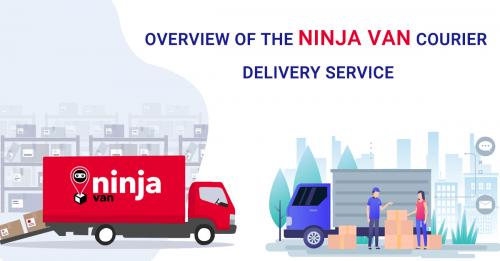7 Things to Keep in Mind While Developing an eCommerce Store
Technology has always managed to surprise us by offering us simplistic ways to deal with our physical world. Online shopping is one of them. Remember those times when we used to reserve a day or two especially for shopping before going out on a holiday? Surely it was an interesting time but it also brought a wave of limitations with the process. What if you fell ill or had some other important work to do? Then you would have to make a whole other level of adjustments just so that you can shop peacefully.
Well, those days are gone now. Shopping has experienced a paradigm shift through the advent of eCommerce stores. Plus the new Industry 4.0 techs such as Virtual Reality (VR) and Augmented Reality (AR) are pushing the boundaries even further. eCommerce stores are now using these techs to enhance their product presentation techniques, eliminate shopping limitations, and delivering a more personalized customer experience. You can hire woocommerce developers for the same.
This blog is all about eCommerce stores and how one can use the below-mentioned, tried, and tested techniques to their advantage for creating or enhancing their customer experience on their eCommerce platform.
7 Things that can Enhance User Experience on your eCommerce Store
Mobile-First Approach:
A smartphone is the most convenient device that is available today. Plus a survey states that a large part of e-store users first use their phone to browse through or research their favorite items. Another thing worth noticing is that consumers also love mobile applications that function, look, and feel like mobile apps.
You’ll notice a surge in your conversion rate if you switch your focus to provide users with a great mobile shopping experience. You would have to write an intelligent code that expresses the same result on different devices with unique screen sizes and aspect ratios. You must also take care that a particular screen appears the same on different platforms. If you optimize the mobile app of your e-store, it will offer a higher sales revenue and conversion rate from the go.Personalized Shopping Experience:
Naturally, every customer would have a unique shopping experience when they shop online. But you can lead a consumer in a particular direction by personalizing their shopping experience.
An e-commerce store gets the opportunity to gather user data based on their preferences, geographical locations, earlier purchases, and brand selection. Data is the most important thing while promoting these services. Analytical tools can help you in offering recommendations, offers, relevant products, and related search results to each consumer.
Today through the incoming of sophisticated tools for data analytics it has become extremely easy to learn user preferences, expectations, and lure them into buying products by offering seductive deals and offers. All the actionable consumer data you gather can be used productively to increase sales revenue.Customer Service:
What makes eCommerce stores so special? It’s the ease with which one can shop and the convenient return/exchange & refund service that it provides. But other than this it’s the customer service that one receives when they’re stuck with a query. That is what adds to the prestige of an eCommerce platform.
Analyze a well-established platform’s customer service. See how they go about handling their users’ queries, observe how they talk with the consumers, do they offer customer service 24*7? Finding appropriate answers to the preceding questions and many others will help you effectively organize your customer services.Designing UI/UX:
If you asked someone a few years ago about the importance of designing UI/UX, the most prevalent answer you would get is the look and feel of the app. But this is certainly not the truth. Designing a UI/UX for an app is considered one of the most crucial tasks today. The ‘UI’ you offer becomes the primary point of interaction between the user and your service. The very first time a user tries your app s/he is going to start gathering on an experience.
The seamless flow between pages, visibility, and alignment of fonts, color scheme, loading speed, and much more account for a satisfying user experience. User experience is all that a user takes with them after using your app for the first time.
If you observe the UX designed by some of the most famous social apps like Facebook, it was designed so intuitively that users just got addicted to it from the first use. A user already has a basic idea of where certain things should be placed in an eCommerce app. If you experiment too much with the placement of features a user would get confused and prefer leaving your platform rather than searching for the options that they want to exercise. You can also check website redesign cost if you wanted to redesign your eCommerce store.High-Resolution Images:
Have you ever seen search results with poor-quality images? The image was so unclear or photoshopped that either you couldn’t see what it represented or was too unbelievable to be true. Images are the most essential part of sales. If the user isn’t able to visually see what they are going to buy, why would they even think of buying it?
Users are already putting a leap of faith on your platform, by choosing your store as opposed to other stores. Now, it becomes your responsibility to offer the user decent images of the products you’re selling. Uploading clear pictures helps a consumer get an exact idea of the product they wish to buy and also builds a sense of trust in them. It inculcates a secure feeling of buying an authentic product. You win a potential customer when this feeling is met with authentic product delivery.Effective Content:
Content is an integral part of an eCommerce app. Starting from the name of the product, description, specifications, user reviews, and much more. Remember, everything counts! Starting from the text hierarchy you use to highlight specific content to the way you go about describing the product.
No users (except a few) are interested in reading everything that is written. Users are generally prone to skimming through the information that is most important to them. Hence, it also becomes important to use different sizes in fonts to offer them the desired information.
It often happens that as soon as the user marks a right tick on the info s/he were looking for, they will directly opt for a check-out. Hence, it’s of utmost importance that you include just the right amount of information using the right text hierarchy.Smoother Check-Outs:
If a user has reached the check-out page it states that your platform has passed all the preceding challenges. Your checkout page is the final hurdle that would convert a potential customer into a real one. The confusion some check-out pages raise within users, unavailability of proper payment options, and unintuitive design results in many consumers canceling buying the product.
The checkout page should be kept as simple as possible. Adding unwanted forms, and asking for irrelevant information may frustrate the user and compel them to leave your platform. The most necessary information should be presented neatly and understandably. Offering authentic payment options that can be exercised with ease is also something you should focus on.
Key Takeaways:
It’s really difficult to establish an eCommerce store in the already competitive world of e-stores. But the most successful eCommerce websites on the planet also had the most humble of beginnings. Before diving into this ocean you must have a strong business model and a niche that you’re going to target with this model.
What features are you looking for in an eCommerce store? Let us know and hire Magento developer or hire Shopify experts as per the requirements.




Comments